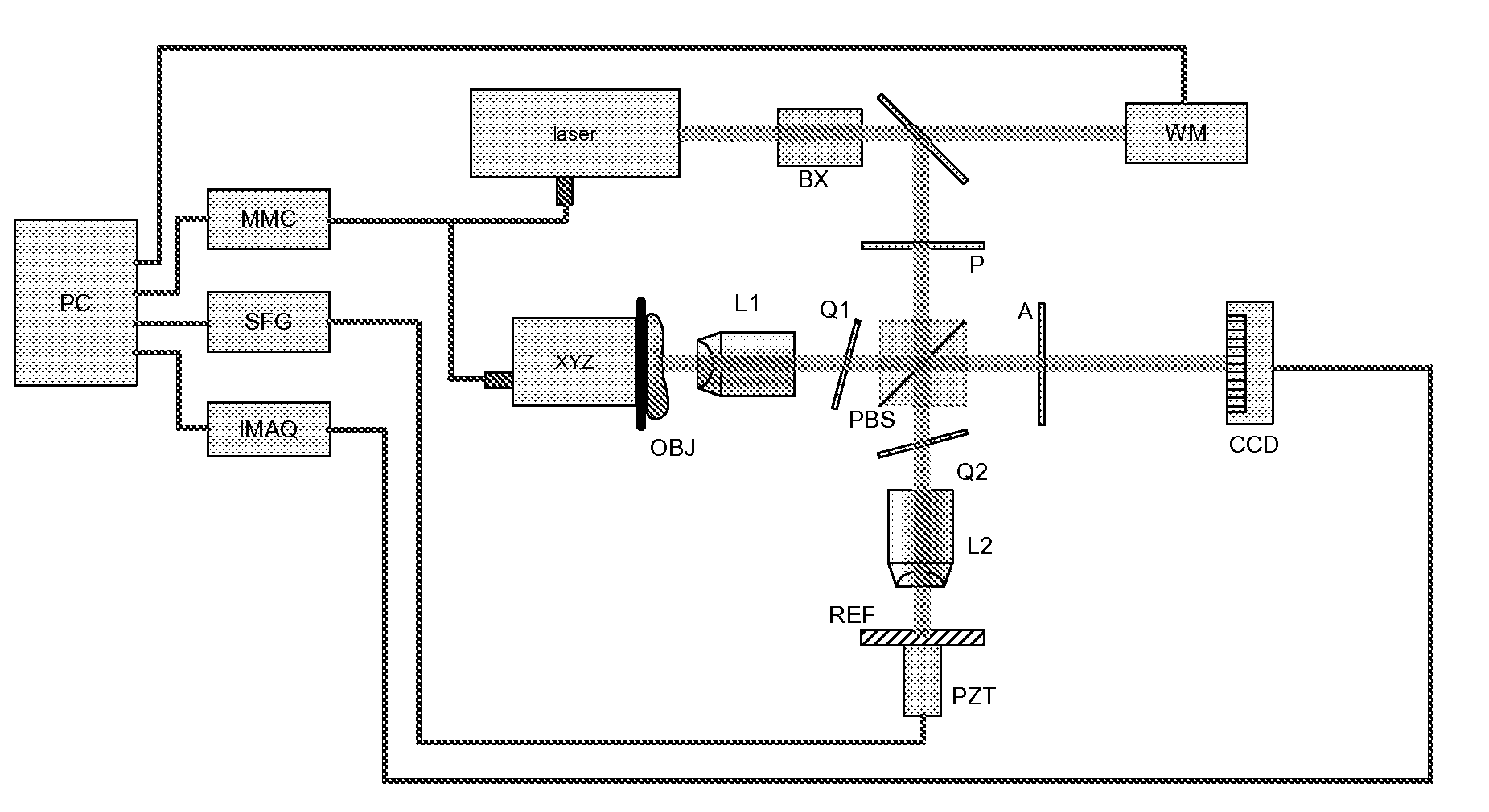Variable Tomographic Scanning with Wavelength Scanning Digital Interface Holography
a technology of tomographic scanning and digital interface, applied in the field of holography, can solve the problems of inability to make his invention practical, time-consuming and cumbersome conventional process of holography using photographic plates, and inability to realize real-time process
- Summary
- Abstract
- Description
- Claims
- Application Information
AI Technical Summary
Problems solved by technology
Method used
Image
Examples
Embodiment Construction
[0160]Digital Holography for Biological Microscopy
[0161]Examples of digital holography of onion cells are shown in FIGS. 1A-D and 1E-H. FIGS. 1A-D depict a 100×100 μm2 area (416×416 pixels) of a layer of onion cells with z=174 μm. The cell walls are sharply focused in the amplitude image and the phase image shows accurate representation of optical thickness, modulo wavelength, of the cell bodies. The images of 70×70 μm2 area (464×464 pixels) in FIGS. 1E-H focus on a nucleus of a cell with z=62 μm. The phase image is a clear view of the optical thickness variation of the nucleus in the middle of the bulged body of the cell. A simple quantitative analysis of the cell's index of refraction is possible. By counting the number of fringes, the optical thickness of the nucleus is easily determined to be 3.5λ=1.86 μm thicker than the cell body. Assuming that the shape of the nucleus is spherical so that its thickness is the same as the 19 μm diameter of the circular image, then the refracti...
PUM
 Login to View More
Login to View More Abstract
Description
Claims
Application Information
 Login to View More
Login to View More - R&D
- Intellectual Property
- Life Sciences
- Materials
- Tech Scout
- Unparalleled Data Quality
- Higher Quality Content
- 60% Fewer Hallucinations
Browse by: Latest US Patents, China's latest patents, Technical Efficacy Thesaurus, Application Domain, Technology Topic, Popular Technical Reports.
© 2025 PatSnap. All rights reserved.Legal|Privacy policy|Modern Slavery Act Transparency Statement|Sitemap|About US| Contact US: help@patsnap.com



